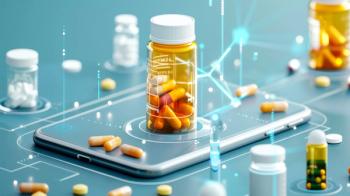
5 Frequently Asked Questions about Drug Diversion Management
The COVID-19 pandemic has exacerbated the "hidden epidemic” of drug diversion. The good news is that health care systems are recognizing the need to switch to a more proactive approach.
More than 90% of hospital executives and providers surveyed by BD Institute for Medication Management Excellence feel the diversion detection tools their hospitals are currently using are very or somewhat effective. If only.
In reality, nearly half (44%) of hospital pharmacists experienced a diversion event within the past 12 months, which is up from 37% in 2019. The COVID-19 pandemic has exacerbated this “hidden epidemic,” a multi-faceted challenge which poses serious risks to patients, clinicians and healthcare systems. In fact, 25% of hospital pharmacists reported that COVID-19 has increased the likelihood that they’ll implement additional drug diversion prevention approaches.
Going Proactive
The good news is that health care systems increasingly recognize the need to switch gears to a more proactive approach. According to Kit Check’s 2020 State of Hospital Pharmacy Operations Report, 37% of hospital pharmacy leaders are investing more resources toward diversion prevention within the next 12 months, and more than half plan to bring in outside resources to help manage their prevention program.
In addition, governing bodies such as the Joint Commission and the American Society of Health-System Pharmacists (ASHP) are developing new guidelines and standards to drive improved best practices for diversion management.
Here are 5 questions frequently asked by health systems seeking to accelerate and improve their efforts to detect and mitigate drug diversion incidents.
What are the biggest challenges in identifying drug diversion?
Limited staff time and other priorities competing for staff attention pose the most common roadblocks, according to pharmacy leaders polled during a recent
Many pharmacists have been serving on the vaccination front lines, further limiting the time they can devote to ongoing diversion evaluation and monitoring. At the same time, they have also had to order larger-than-usual quantities of controlled substances and other lifesaving drugs to treat the continuing waves of critically ill COVID patients, increasing the opportunity and temptation for drug diversion within their hospitals.
How have responsibilities for addressing and resolving drug diversion issues evolved?
Drug diversion management has typically been handled by pharmacists. However, drug diversion investigation teams are increasingly expanding to include other departments such as nursing, risk management and human resources. In addition, with the implementation of electronic health records (EHRs), automated dispensing systems (ADS) and other technologies, much of the responsibility for targeting discrepancies has shifted to nurse managers and charge nurses. However, there is still a critical shortage of staff members with the time and skills needed to extract insights from the voluminous data generated. Across operating rooms, nursing floors, and stocking, most hospital pharmacy teams are spending up to 10 hours per week on discrepancies related to controlled substances.
What offers the biggest opportunity to improve diversion identification?
Nearly half (48%) of the Becker’s roundtable attendees said they saw technology – such as automation, machine learning, radio frequency identification and artificial intelligence (AI) – as the biggest opportunity to zero in on drug diversion activity more quickly and accurately. Many health systems still rely heavily on inefficient, time-consuming manual processes, such as periodically spot-checking approximately 10-20% of their total transactions monthly, using 30-day old data.
Health systems that have already deployed a fully automated system and begun reviewing 100% of their transactions are often stunned to see the discrepancies compared with their previously manual processes.
When selecting automated systems and software, which capabilities are most critical?
First and foremost, drug diversion software should integrate data in near-real-time from multiple technology platforms within a hospital system, including EHRs, ADS, and time and attendance systems. By highlighting potential risk, problem areas and documentation anomalies across the clinical continuum, the technology tools accelerate efficiency, accuracy and response time. If investigation is warranted, all-in-one diversion monitoring tools can galvanize collaboration and communication across distributed health system teams.
How do you justify the cost of technology in a difficult economic environment?
Implementing technology to drive improved drug diversion management delivers numerous benefits. Using software to automatically generate weekly reports, identify standard deviation differences and provide visibility into the entire drug lifecycle can eliminate the need to hire extra staff to track diversion. By streamlining investigation and follow-up, technology enables prompt and thorough reporting to the Drug Enforcement Agency (DEA) and licensing boards, which can help avoid negative economic impact as well as prevent continued diversion.
The ability to more quickly and accurately flag potential signs of diversion down to the individual level also allows health systems to get timely treatment for clinicians, pharmacists and other staff in need of help. Supporting caregivers not only prevents them from compromising their own health – it protects the patients for whom they provide care – which is what matters most.
For more information on how to identify, manage and prevent drug diversion, please visit:
About the Author
Patrick Yoder, PharmD, developed a passion for innovation re-engineering bicycles to better suit the needs of childhood. He started his career in medical research, then as a Clinical Pharmacist and an Informatician. As the vice president of Informatics and Clinical Development at Wolters Kluwer Health, he spearheaded the creation of a solution that established the company as the recognized market leader within four years. He also led the informatics team at Hennepin County Medical Center before co-founding LogicStream Health.
Reference
- 2020 State of Hospital Pharmacy Operations Report. Kit Check. 2021. Accessed May 27, 2021. https://kitcheck.com/resource/hospital-pharmacy-operations-report-2020/.
Newsletter
Pharmacy practice is always changing. Stay ahead of the curve with the Drug Topics newsletter and get the latest drug information, industry trends, and patient care tips.











































































































































































































